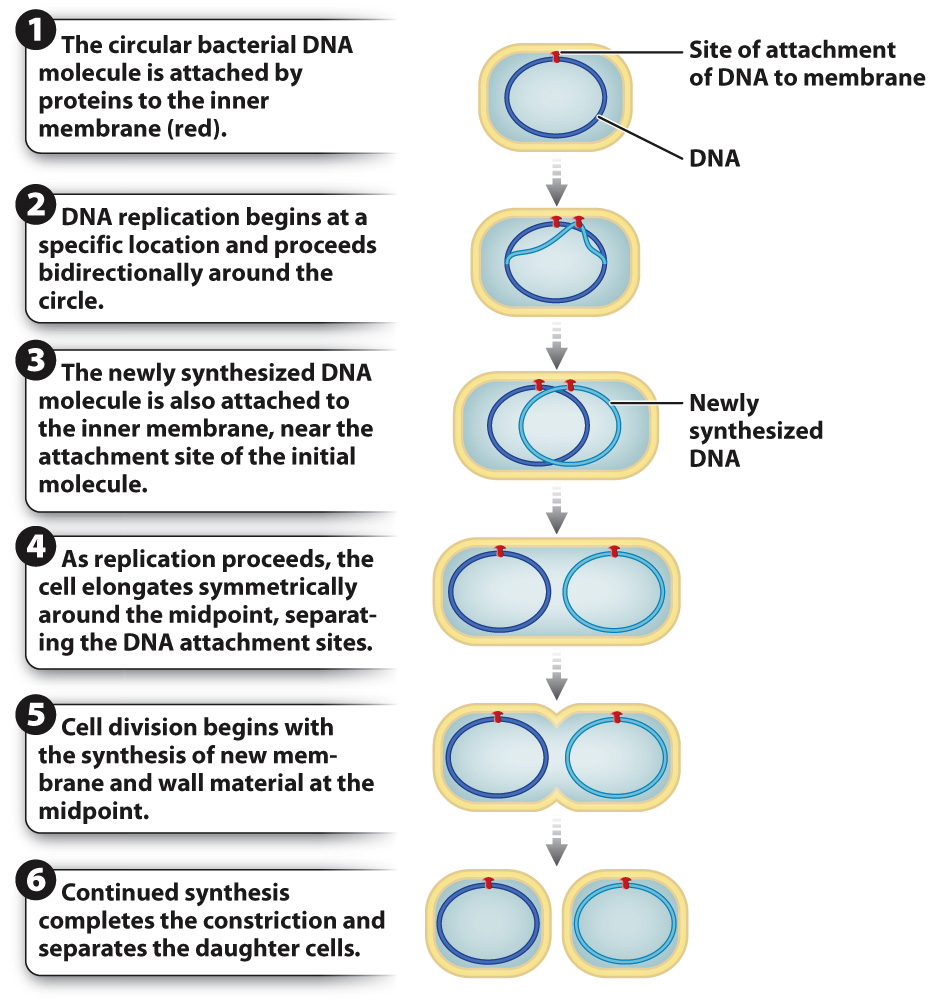Prokaryotic cells reproduce by binary fission.
The majority of prokaryotic cells, namely bacteria and archaeons, divide by binary fission. In this form of cell division, a cell replicates its DNA, increases in size, and divides into two daughter cells. Each daughter cell receives one copy of the replicated parental DNA. The molecular mechanisms that drive binary fission have been studied most extensively in bacteria. The process of binary fission is similar in archaeons, as well as in chloroplasts and mitochondria, organelles within plant, fungal, and animal cells that evolved from free-
Let’s consider the process of binary fission in the intestinal bacterium Escherichia coli (Fig. 11.1). The circular genome of E. coli is attached by proteins to the inside of the plasma membrane. DNA replication is initiated at a specific location on the circular DNA molecule, called the origin of replication, and proceeds in opposite directions around the circle. The result is two DNA molecules, each of which is attached to the plasma membrane at a different site. The two attachment sites are initially close together. The cell then elongates and, as it does so, the two DNA attachment sites move apart. When the cell is about twice its original size and the DNA molecules are well separated, a constriction forms at the midpoint of the cell. Eventually, new membrane and cell wall are synthesized at the site of the constriction, dividing the single cell into two. The result is two daughter cells, each having the same genetic material as the parent cell.

Like most cellular processes, binary fission requires the coordination of many components in both time and space. Recent research has identified several genes whose products play a key role in bacterial cell division. One of these genes, called FtsZ, has been especially well studied. Many copies of the protein it encodes assemble and form a ring at the site of constriction where the new cell wall forms between the two daughter cells. FtsZ is present in the genomes of diverse bacteria and archaeons, suggesting that it plays a fundamental role in prokaryotic cell division. Interestingly, it appears to be evolutionarily related to tubulin, which you will recall from Chapter 10 makes up the dynamic microtubules found in eukaryotic cells that are important in intracellular transport, cell movement, and cell division.
221
Quick Check 1 What do you predict would be the consequence of a mutation in FtsZ that disrupts the function of the protein it encodes?
Quick Check 1 Answer
A mutation that disrupts the function of the FtsZ protein will block cell division.